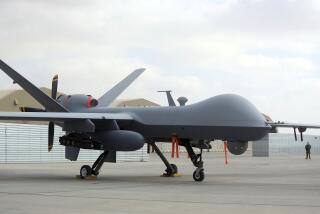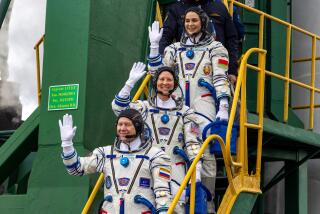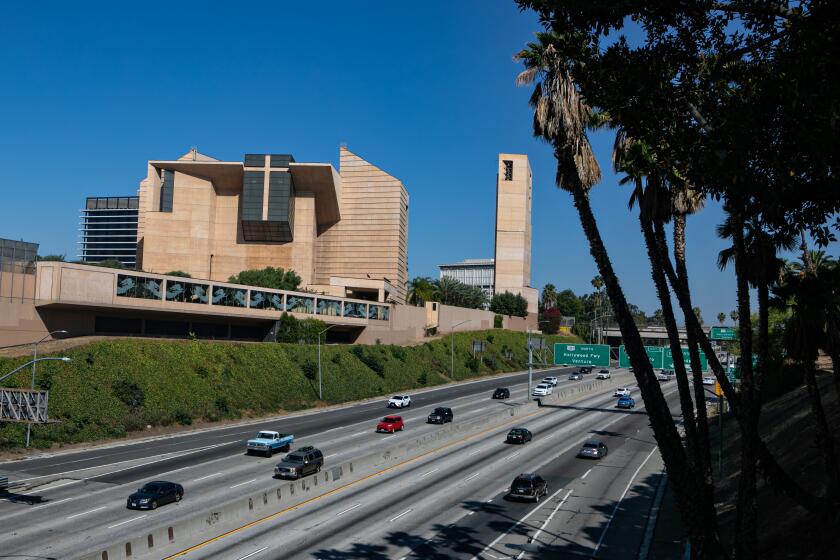Sputnik’s warning
Few Americans have ever heard of Sergei Pavlovich Korolev. But he is the reason that NASA was created and that we went to the moon. It is because of this anonymous Russian that we have federally backed college loans in this country and National Football League games on DirecTV. The Chief Designer, as Korolev was mysteriously known because his true identity was a Soviet state secret, almost single-handedly started the space and missile races. Thanks largely to this bullheaded survivor of Stalin’s gulag, a man who lost all his teeth and nearly his life in Siberian camps, the Republican Party lost the White House in 1960, and Lyndon B. Johnson secured a place on John F. Kennedy’s ticket and ultimately became the 36th president.
All this is just some of the fallout from Sputnik, the tiny Soviet satellite that Korolev and his team launched 50 years ago on Oct. 4, 1957, igniting a national panic in the United States, the effects of which still reverberate. The little aluminum sphere was not the source of fear, but rather the huge rocket that it rode atop, the world’s first intercontinental ballistic missile. The 183-ton projectile gave the former Soviet Union an unrivaled capability to destroy any city on Earth within minutes of its launch. For the first time in U.S. history, the American heartland was vulnerable to attack by a foreign government.
For Korolev’s Kremlin masters, Sputnik was never about space exploration or cosmic milestones. It was a bold display of military might meant to match -- and top -- Washington’s own frequent exhibitions of firepower. “We simply switch the warhead,” boasted Soviet leader Nikita S. Khrushchev, in case anyone missed the point.
The irony of the Sputnik crisis, of the terrifying realization that the Soviet Union suddenly possessed an advanced new weapons system far more lethal than anything in the U.S. arsenal, was that the debacle was largely of Washington’s own making -- a perfect example of how a nation’s best-intentioned policies can sometimes backfire.
The roots of the crisis went back to 1953, when Dwight D. Eisenhower swept into the White House on a platform of securing the country against communist threats. Under the stewardship of John Foster Dulles, his hawkish secretary of State, Eisenhower devised a new defense doctrine to counter the spreading “Red menace,” which had recently claimed Eastern Europe and was infecting Asia. The U.S., according to Ike’s doctrine, would no longer get bogged down in “minor” wars like in Korea. Instead, it would prepare for “total war,” an all-out nuclear holocaust designed, in Dulles’ own words, “to create sufficient fear in the enemy to deter aggression.”
To keep the Soviets sufficiently frightened and in check, the Air Force’s Strategic Air Command, or SAC, began a systematic and sustained campaign of harassment and intimidation. Every day, U.S. planes took off from bases around the world and penetrated Soviet airspace, probing for weaknesses in Russian radar defenses. Huge exercises with ominous names like Operation Power House scrambled hundreds of nuclear-laden long-range bombers that charged across the Atlantic, headed for Moscow. At the last minute, they would turn around, but in some war games, squadrons of B-47 Stratojets would take off from Greenland, cross the North Pole and fly deep into Siberia in attack formation -- in broad daylight. “With any luck, we could have started World War III,” the SAC commander, Gen. Curtis LeMay, famously declared.
The Russians were not amused. Had the Soviets tried the same stunt, Khrushchev indignantly responded, “it would have meant war.”
Throughout the campaign to demonstrate overwhelming American air superiority, the United States violated Soviet airspace more than 10,000 times. Our thermonuclear stockpile increased tenfold, while LeMay publicly speculated about the 60 million Soviet citizens targeted for annihilation under the Dulles doctrine of massive retaliation. The term was a bit of a misnomer because Soviet planes at the time did not have the range to reach U.S. soil and never once infringed on U.S. territory.
The double standard was not lost on Khrushchev. “Stop sending intruders into our airspace,” he thundered at a visiting U.S. Air Force delegation in 1956. But he was largely powerless to prevent the incursions, which, of course, was the entire point of the exercise.
Unfortunately, the massive retaliation doctrine was too effective. “Soviet leaders may have become convinced that the U.S. actually has intentions of military aggression,” the CIA warned in a 1955 report. And the intelligence agency was right. “We were very afraid, and saw the Americans clearly as the aggressors,” recalled Khrushchev’s son, Sergei, who now lives in Rhode Island.
And so the Soviet Union started a crash program to build an ICBM. Korolev, who as a lonely and fatherless child dreamed of the Wright brothers and grew up in splendid isolation behind the locked gates of his grandparents’ czarist estate, was given a blank check. A sturdy, studious lad who would develop a boxer’s build and a disdain for suits and ties, he nonetheless mesmerized Khrushchev, who was fascinated with rocket technology.
While the U.S. slashed its meager missile budget to build bigger and more bombers, Korolev launched Sputnik largely to distract Khrushchev from the nagging problems he was having developing a heat shield that could protect a nuclear warhead from the atmospheric forces of reentry. The Politburo justified its new weapon of mass destruction as a crucial deterrent. “For us, it was of national importance,” Sergei Khrushchev explained. “Father felt that only its existence could stop war.”
Sputnik was the ICBM’s public unveiling, Moscow’s turn to demonstrate its air superiority. Ten times more powerful than any operational U.S. missile of the era, it instantly redressed and reversed the strategic imbalance and catapulted the Soviet Union into superpower status as America’s technological equal.
The Eisenhower administration’s own actions, which some historians now call reckless, inadvertently sped up the Soviets’ quest for a missile. It’s a historical lesson the current occupants of the White House should ponder.
Today, as it was half a century ago, the United States is far ahead of its closest military rivals. But U.S. military posturing continues at Russia’s expense.
To be sure, no one in the new Moscow -- a city of sushi bars and billionaires, oil barons and metals magnates, where convoys of Mercedes glide along once desolate streets and the swankiest apartments list for upward of $50 million -- is worried about war. But a Bush administration plan to install a missile defense system in several former Warsaw Pact nations, now NATO members, is feeding Russia’s traditional paranoia about the West.
The missile interceptor shield, the administration says, is a defense against rogue states such as Iran and North Korea. Yet Washington’s insistence on deploying the system in Poland, Russia’s frontyard, rather than in Central Asia, where it would be closer to its intended targets, as Russian President Vladimir V. Putin has proposed, is prompting a return to Cold War rhetoric from the Kremlin. In retaliation, Russia has resumed the global patrols of its nuclear bomber fleet, which had been suspended since 1991, tested a new “father of all bombs” and fast-tracked development of a new-generation ballistic missile capable of evading U.S. interceptor shields.
Flush with petrodollars -- Russia’s Siberian oil fields produce more oil and natural gas than Saudi Arabia -- and eager to prove that it is back as a major power, Moscow is not in a mood to be bullied or belittled by the United States. And Sputnik should serve as a reminder of what happens when you goad the Russian bear.
Matthew Brzezinski, a former Wall Street Journal Moscow correspondent, is the author of “Red Moon Rising: Sputnik and the Hidden Rivalries that Ignited the Space Age.”
More to Read
A cure for the common opinion
Get thought-provoking perspectives with our weekly newsletter.
You may occasionally receive promotional content from the Los Angeles Times.










